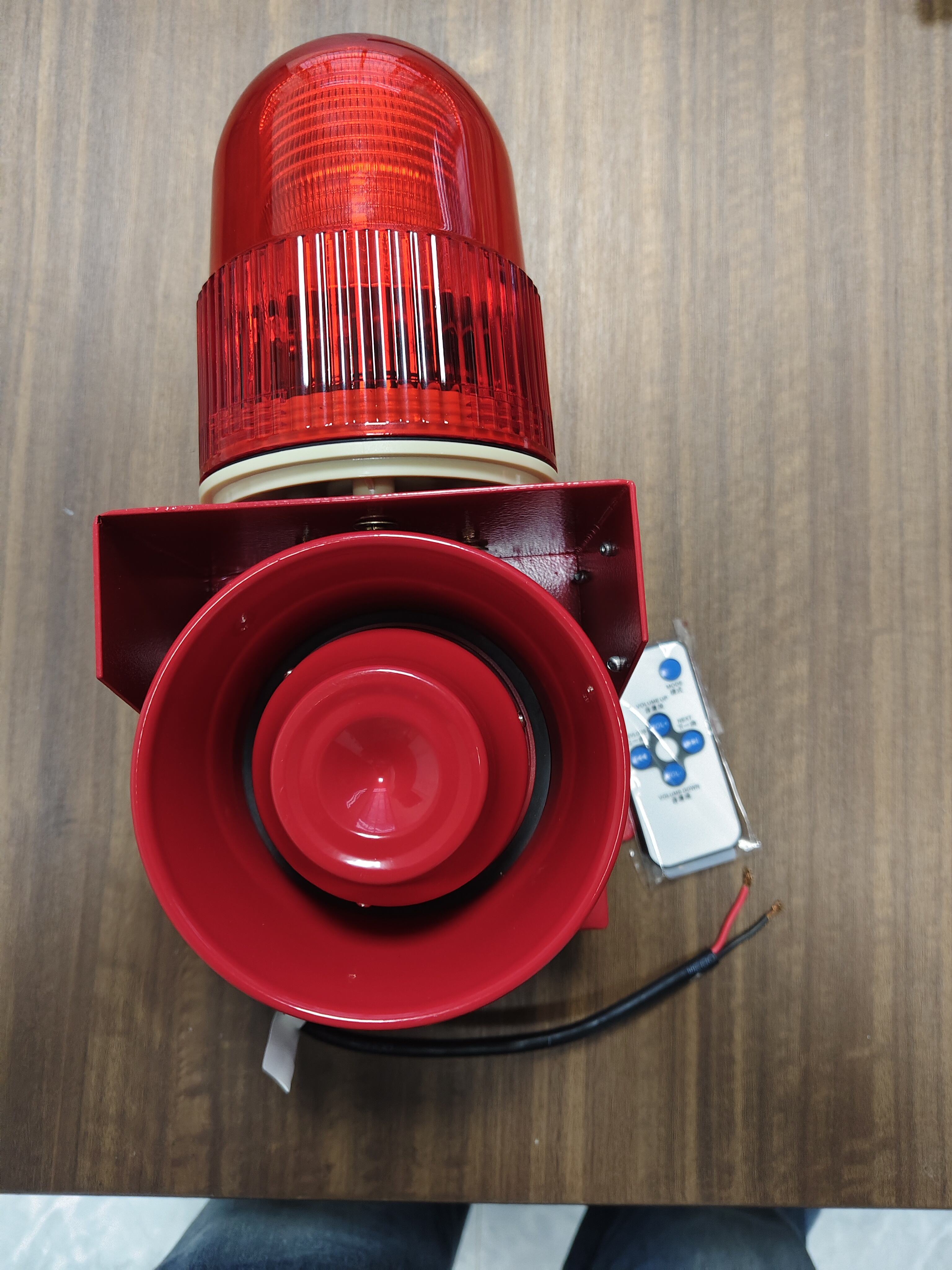Industrial settings—such as factories, refineries, warehouses, and manufacturing plants—operate with heavy machinery, complex processes, and potential hazards like chemical leaks, fires, or equipment malfunctions. In these environments, quick and clear communication during emergencies is critical to protecting workers, preventing injuries, and minimizing operational disruptions. Traditional alarm systems, relying on sirens, buzzers, or flashing lights, can alert workers to danger but often fail to convey specific information about the threat or required actions. This is where voice alarms stand out. Voice alarms use spoken messages to deliver precise, actionable guidance during emergencies, making them a powerful tool for enhancing safety and efficiency in industrial settings. This guide explores the key benefits of using voice alarms in industrial environments, from reducing confusion to ensuring faster, more coordinated responses.
What Are Voice Alarms in Industrial Settings?
Voice alarms are emergency communication systems designed to broadcast pre-recorded or live spoken messages through speakers strategically placed across industrial facilities. These systems integrate with sensors (such as smoke detectors, gas monitors, or motion sensors) and control panels, allowing them to trigger automatically when a hazard is detected. They can also be activated manually by safety personnel during unforeseen incidents.
In industrial settings, voice alarms are engineered to overcome challenges like high noise levels, large facility sizes, and diverse workforces. Messages are clear, concise, and tailored to specific threats, such as “Evacuate zone 3 immediately due to chemical leak—use emergency exits A and B” or “Fire detected in the north warehouse—activate fire extinguishers and move to assembly area.” Many systems support multiple languages and adjustable volume, ensuring messages are heard and understood by all workers, regardless of their location or background.
Key Benefits of Using Voice Alarms in Industrial Settings
Delivers Clear, Actionable Instructions
One of the biggest limitations of traditional industrial alarms is their ambiguity. A siren or flashing light signals “danger” but provides no details about what is happening, where the hazard is, or how to respond. This ambiguity can lead to confusion, delays, or incorrect actions—all of which increase injury risks in high-stakes situations.
Voice alarms solve this by delivering specific, step-by-step guidance. For example:
- During a chemical leak: “Toxic gas detected in the east processing unit—put on respirators, shut down valves 4 and 5, and evacuate to the west safety zone.”
- During a fire: “Fire in the packaging area—activate sprinklers, close fire doors, and evacuate via stairwell 3. Do not use elevators.”
- During equipment failure: “Conveyor belt 2 has jammed—shut down power to the unit and wait for maintenance. Do not attempt to clear the jam manually.”
This clarity ensures workers understand the nature of the threat, its location, and the exact steps to take, reducing guesswork and enabling confident, quick action. When workers know exactly what to do, they are far more likely to respond effectively, even under stress.
Cuts Through Noise and Reaches All Areas
Industrial facilities are often noisy, with machinery, fans, and production processes creating high background noise. Traditional alarms may be drowned out in these environments, leaving workers in some areas unaware of emergencies. Large facilities—such as warehouses or refineries spread over acres—also face challenges in ensuring alarms reach every corner.
Voice alarms are designed to overcome these barriers. They use high-decibel speakers, strategically placed throughout the facility, to ensure messages are heard even over loud machinery. Many systems also use directional speakers to target specific zones, ensuring workers in high-risk areas receive critical alerts without overwhelming others in safe zones.
For example, in a steel mill with loud furnaces, voice alarms with noise-canceling technology can broadcast messages at volumes that cut through the din, ensuring workers near the furnaces hear evacuation instructions. In a large warehouse, speakers mounted on ceilings and equipment relay messages to workers in remote storage areas, ensuring no one is left uninformed.
This reliable coverage is essential in industrial settings, where a single unalerted worker could face severe risks.

Reduces Panic and Improves Response Coordination
Emergencies in industrial settings can trigger panic, especially when workers are unsure of the situation or their role in the response. Panic leads to irrational behavior—such as rushing toward hazards, ignoring safety protocols, or blocking emergency exits—exacerbating risks.
Voice alarms help calm nerves and coordinate responses by providing a sense of control and structure. The human voice, especially when delivering steady, authoritative instructions, reassures workers and signals that the situation is being managed. Pre-recorded messages from familiar safety officers or supervisors add a personal touch, enhancing trust in the guidance provided.
For example, during a sudden power outage in a manufacturing plant, a voice alarm stating, “This is a controlled shutdown—remain at your stations, use emergency lighting, and await further instructions from your supervisor” prevents chaotic evacuations and ensures workers stay in safe areas until the situation is assessed.
By reducing panic and clarifying roles, voice alarms enable coordinated responses, where workers support each other and follow established protocols—key to minimizing injuries and damage.
Overcomes Language and Literacy Barriers
Industrial workforces are often diverse, with workers speaking multiple languages or having varying levels of literacy. Traditional alarms, which rely on written signs or universal sounds, may fail to communicate effectively with these workers, leaving them vulnerable in emergencies.
Voice alarms address this by supporting multiple languages and simple, clear wording. Pre-recorded messages can be stored in the primary languages of the workforce—such as English, Spanish, Mandarin, or Hindi—and triggered based on the facility’s needs. For example, in a factory with a multilingual team, a voice alarm might first broadcast instructions in English, then repeat them in Spanish and Arabic.
This ensures that all workers, regardless of their primary language or reading ability, understand the emergency and the required actions. In a chemical plant with workers from 10 different countries, this inclusivity could mean the difference between a safe evacuation and preventable injuries.
Integrates with Sensors for Instant, Targeted Alerts
Modern industrial voice alarm systems integrate seamlessly with facility sensors and control systems, enabling automatic, targeted alerts when hazards are detected. This integration ensures alarms are triggered within seconds of a threat, minimizing response time.
For example:
- Gas sensors detecting a propane leak can automatically trigger a voice alarm in the affected zone, warning workers before concentrations reach dangerous levels.
- Heat detectors in a paint shop can activate a voice alarm about a potential fire, allowing workers to respond before flames spread.
- Motion sensors detecting unauthorized access to a restricted area (like a chemical storage room) can alert security teams with a voice message, enabling rapid intervention.
This instant, automated response is critical in industrial settings, where delays of even a minute can lead to catastrophic outcomes, such as chemical explosions or large-scale fires.
Supports Training and Emergency Drills
Effective emergency response in industrial settings relies on regular training and drills. Voice alarms play a key role in these activities, helping workers practice their roles in realistic scenarios.
During drills, voice alarm systems can broadcast simulated emergency messages, such as “This is a drill—simulated chemical leak in zone 1. Practice donning PPE and evacuating to the assembly area.” This allows workers to experience how alarms will sound and practice following instructions, making them more prepared for real emergencies.
Many voice alarm systems also include features for post-drill feedback, such as tracking evacuation times or identifying areas where workers struggled to hear messages. This data helps safety teams refine training programs and adjust speaker placement, ensuring continuous improvement in emergency readiness.
Over time, repeated exposure to voice alarm messages helps workers memorize protocols, so they respond automatically during real emergencies—reducing reaction times and improving outcomes.
Ensures Compliance with Safety Regulations
Industrial settings are governed by strict safety regulations, such as OSHA (U.S.), EU ATEX, or ISO 45001, which mandate effective emergency communication systems. These regulations require facilities to not only alert workers to hazards but also provide clear guidance on how to respond. Failure to comply can result in fines, facility shutdowns, or legal liability for injuries.
Voice alarms help industrial facilities meet these requirements by providing documented, auditable emergency communication. For example:
- OSHA’s standards for process safety management (PSM) require “effective emergency action plans” with clear communication of hazards—voice alarms fulfill this by delivering specific, actionable messages.
- EU ATEX regulations for explosive environments mandate alarms that are “audible and understandable” to workers—voice alarms meet this by using clear language and high-visibility messaging.
- ISO 45001, which focuses on occupational health and safety, requires facilities to “establish processes for communicating emergency information”—voice alarms are a proven solution for this requirement.
By using voice alarms, industrial facilities demonstrate compliance with regulations, protecting their business from penalties while prioritizing worker safety.
Reduces False Alarms and Disruptions
Traditional alarms in industrial settings often trigger false alarms—from sensor malfunctions, dust, or minor equipment issues—leading to unnecessary evacuations, production stoppages, and worker complacency (“crying wolf” syndrome). Over time, workers may ignore alarms, putting them at risk when real emergencies occur.
Voice alarms reduce false alarms by providing context. When a potential hazard is detected, the system can broadcast a preliminary message, such as “Possible gas leak detected—await confirmation from safety team,” allowing workers to stay alert without immediate evacuation. If the hazard is confirmed, a follow-up message with specific instructions is sent. This reduces unnecessary disruptions to production and maintains worker trust in the alarm system.
For example, in a food processing plant, a dust sensor might falsely detect a fire due to flour particles. Instead of triggering a full evacuation siren, the voice alarm can alert workers to the potential issue and advise them to stand by, preventing downtime until the false alarm is resolved.
Real-World Examples of Voice Alarm Benefits in Industrial Settings
Chemical Plant Evacuation
A chemical plant experienced a minor ammonia leak in its refrigeration unit. The facility’s voice alarm system, triggered by gas sensors, immediately broadcast: “Ammonia leak in unit 5—put on respiratory protection, isolate the unit by closing valve 7, and evacuate to the north assembly area.” Workers followed the instructions, and the leak was contained within 15 minutes, with no injuries or major production disruption.
Warehouse Fire Response
A fire broke out in a large distribution warehouse’s electrical room. The voice alarm system targeted messages to workers in nearby zones: “Fire in electrical room B—evacuate to exits 4 and 5. Fire team, respond to room B with extinguishers.” The clear guidance ensured workers evacuated safely, and firefighters contained the fire before it spread to stored goods.
Manufacturing Plant Equipment Failure
A conveyor belt jammed in an automotive parts plant, creating a risk of overheating. The voice alarm broadcast: “Conveyor 3 jammed—maintenance team, respond to zone 2. All other workers, avoid the area and continue production in zone 1.” This prevented untrained workers from attempting risky repairs and ensured the issue was resolved quickly by specialists.
FAQ
How do voice alarms work in extremely noisy industrial environments?
Voice alarms use high-decibel speakers, noise-canceling technology, and frequency adjustments to cut through background noise. Many systems also repeat messages multiple times to ensure comprehension, even in loud settings like factories or refineries.
Can voice alarms support multiple languages in the same facility?
Yes. Most industrial voice alarm systems allow storing pre-recorded messages in multiple languages. They can broadcast messages in sequence (e.g., English first, then Spanish) or target specific language messages to zones with workers who speak that language.
Are voice alarms difficult to install in existing industrial facilities?
No. Modern voice alarm systems are designed for easy integration with existing infrastructure. They use wireless or minimal wiring, and speakers can be mounted on walls, ceilings, or equipment with minimal disruption to operations.
How often should voice alarm messages be updated?
Messages should be reviewed and updated whenever processes, hazards, or emergency protocols change—for example, after a new chemical is introduced or a safety zone is relocated. Regular testing (monthly) ensures messages remain clear and speakers function properly.
Do voice alarms replace other safety systems like emergency stop buttons?
No. Voice alarms complement other safety systems. Emergency stop buttons provide immediate shutdowns for equipment, while voice alarms guide broader responses (evacuations, hazard containment). Together, they create a layered safety approach.
Table of Contents
- What Are Voice Alarms in Industrial Settings?
-
Key Benefits of Using Voice Alarms in Industrial Settings
- Delivers Clear, Actionable Instructions
- Cuts Through Noise and Reaches All Areas
- Reduces Panic and Improves Response Coordination
- Overcomes Language and Literacy Barriers
- Integrates with Sensors for Instant, Targeted Alerts
- Supports Training and Emergency Drills
- Ensures Compliance with Safety Regulations
- Reduces False Alarms and Disruptions
- Real-World Examples of Voice Alarm Benefits in Industrial Settings
-
FAQ
- How do voice alarms work in extremely noisy industrial environments?
- Can voice alarms support multiple languages in the same facility?
- Are voice alarms difficult to install in existing industrial facilities?
- How often should voice alarm messages be updated?
- Do voice alarms replace other safety systems like emergency stop buttons?

